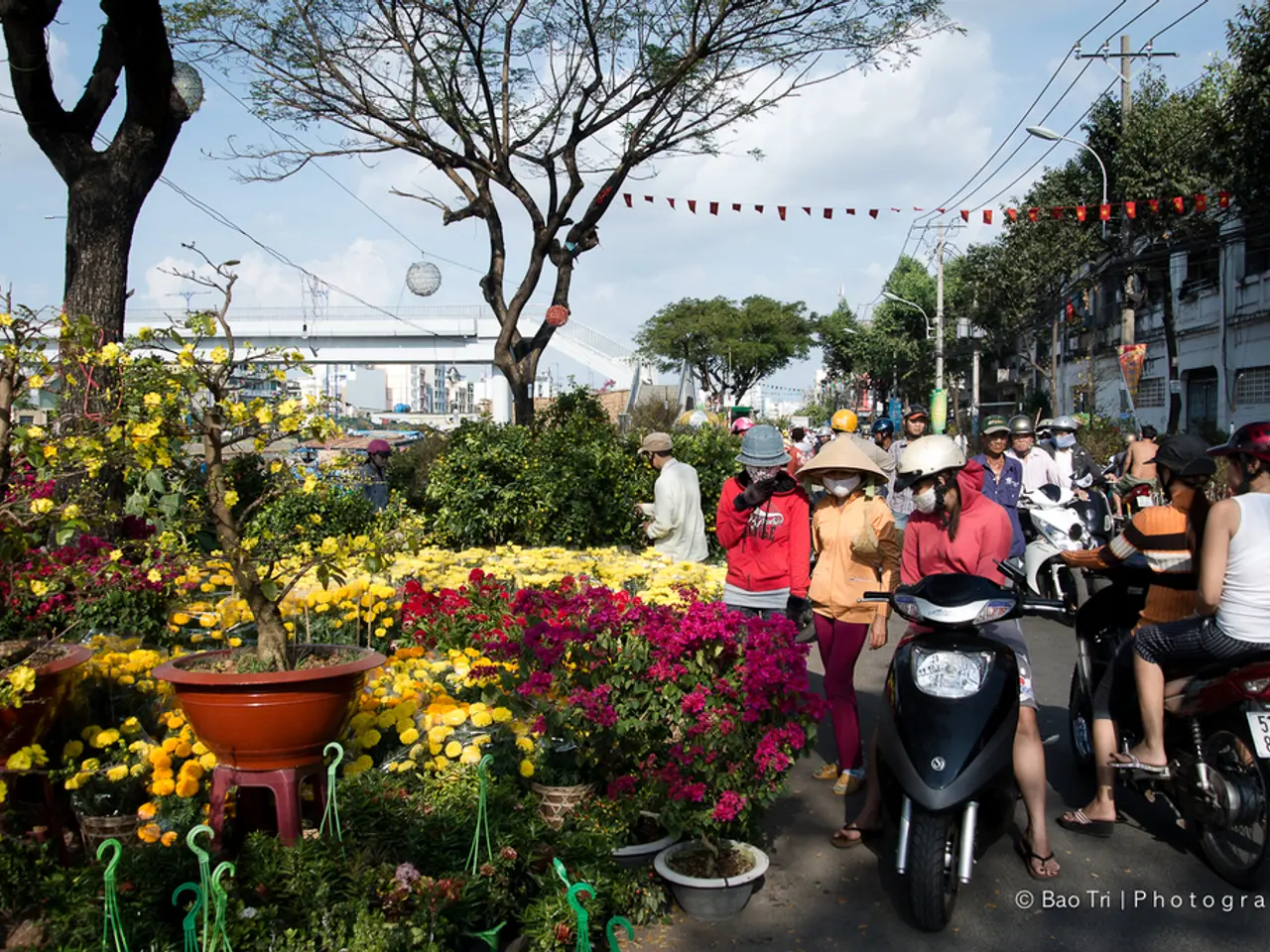Haringey to Maintain Quiet Residential Areas with Minimal Traffic Flow
In the heart of London, the borough of Haringey has been making strides in reducing traffic, improving safety, and enhancing air quality through the implementation of Low Traffic Neighbourhood (LTN) schemes in Bounds Green, St Ann's, and Bruce Grove West Green.
The Bowes Primary Area Quieter Neighbourhood trial, initiated in September 2020 and made permanent in January 2022, is one such example. The scheme, which includes modal filters, traffic restrictions, and a 20 mph speed limit, aims to create healthier streets, significantly reduce through motor traffic, and encourage walking and cycling.
However, the results have been mixed. While traffic within the LTNs has decreased by a substantial 58%, with an average increase in traffic on boundary roads of just 3%, no improvement in air quality has been observed. In Bounds Green, the NO2 concentration increased by 12% across internal roads, 12% on boundary roads, and 9% overall. Similar trends were seen in St. Anns (average NO2 increase of 1.5%) and Bruce Grove West Green (2% increase in NO2 concentration for sites in the LTN scheme area, 5% elsewhere in the Borough).
Despite these findings, the council remains committed to creating a borough that works for everyone, not just for the next few years, but for generations to come. Cllr Mike Hakata, Cabinet Member for Climate Action, Environment and Transport, stated that the LTNs are delivering on their major objective of making it easier and safer for people to walk, wheel, scoot, and shop locally.
To ensure a just transition, the council is working to make the schemes fair and responsive to feedback from residents. A comprehensive program of improvements is underway, including better bus priority, enhanced pedestrian crossings, more protected cycle lanes, and measures to reduce congestion.
Moreover, the council has introduced one of the most extensive exemption schemes and has worked closely with the disabled community and other local communities to review and refine their exemptions. The Haringey Climate Partnership, a collaborative forum with residents and communities, has been created to drive action on pollution and emissions.
Despite local controversy around the effectiveness of the LTN schemes, three of them will be retained. Collisions within the LTNs and on boundary roads have decreased by 34%, providing a glimmer of hope for the future. However, it is clear that the broader traffic congestion challenges in Haringey and mixed public opinion suggest that impacts may vary and require ongoing evaluation.
Published monitoring reports from local councils provide detailed insights, but more comprehensive, independent analyses would be needed to definitively quantify effects on safety, traffic, and air quality in these neighbourhoods. The future of these LTN schemes in Haringey remains a topic of ongoing discussion and observation.
[1] London Councils (2020). London's Low Traffic Neighbourhoods: A Review of Evidence.
[2] Haringey Council (2021). Bowes Primary Area Quieter Neighbourhood Monitoring Report.
[3] Evening Standard (2021). Haringey's Low Traffic Neighbourhoods: 'Greenwashing' or a way forward for London's streets?
[4] Transport for London (2019). Healthy Streets for London: An Outline Implementation Plan.
[5] CityMetric (2021). Haringey's Low Traffic Neighbourhoods are a disaster for air quality.
- The borough of Haringey, within the broader community of London, is fostering collaboration with local environmental-science experts to study and address the climate-change impact of Low Traffic Neighbourhood (LTN) schemes.
- As the implementation of LTNs continues to influence the industry of transportation, the council is exploring financial strategies to allocate resources for improvements in air quality, considering feedback from residents and local environmental groups.
- To ensure fair implementation, Haringey Council is actively engaging with the neighbourhood, including the disabled community, in discussions about exemption schemes and ongoing evaluations of LTNs' effects on safety, traffic, and air quality.
- By collaborating with various industries, such as science, finance, and transportation, and seeking comprehensive, independent analyses, Haringey Council aims to create a greener, healthier future for their neighbourhoods and reinforce their commitment to the well-being of generations to come.




